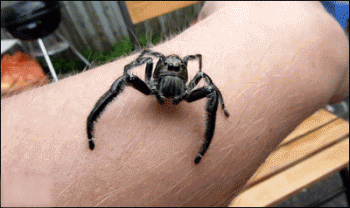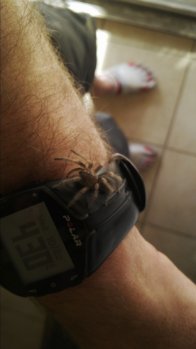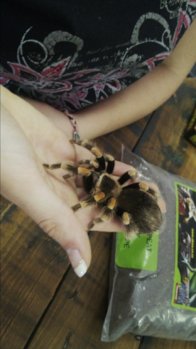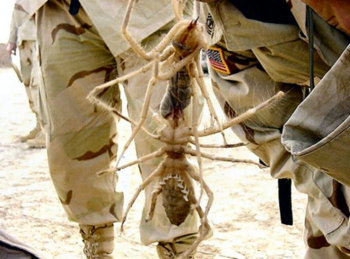Navigation
Install the app
How to install the app on iOS
Follow along with the video below to see how to install our site as a web app on your home screen.

Note: this_feature_currently_requires_accessing_site_using_safari
More options
You are using an out of date browser. It may not display this or other websites correctly.
You should upgrade or use an alternative browser.
You should upgrade or use an alternative browser.
Arachnids
- Thread starter thekeeperza
- Start date
You forgot prettttyy
I wish the disagree button never gave you bad ratings....
I love the Indian ornamentals, i too had a fair collection. Sadly landlord dont like snakes and spiders...My biggest tarantula - Poecilotheria regalis (Indian tree spider). Her first appearance since moulting last week and sporting an impressive 18-19cm leg span.

I got my first B.smithi from Reptillians.
Vape the Planet
Either Madagascan hissing roaches or Orange spotted roaches - I keep a colony of both.what does it eat?
Ornamentals are the best - I had all the ornamentals available in SA at one point.I love the Indian ornamentals, i too had a fair collection. Sadly landlord dont like snakes and spiders...
I got my first B.smithi from Reptillians.
Vape the Planet
Didn't you have like 5 kids at one stage?Either Madagascan hissing roaches or Orange spotted roaches - I keep a colony of both.
Either Madagascan hissing roaches or Orange spotted roaches - I keep a colony of both.
thats wow! so you have to bread their food as well. very interesting
Apparently @BoogaBooga has a whole collection tooI wont be visiting there anytime soon either
Thanks for the heads up, another place to avoid.
Here's one I ran into (almost literally) in the bush some years back:
View attachment 14483 View attachment 14484 View attachment 14485 View attachment 14486
Never did identify it, and sadly I didn't capture it with a scale comparison - it was around the size of my palm.
Its called a Sun Spider. The make their webs between 2 trees and often catch small birds for lunch
Beautiful spiders Wow! you guys get to have all the fun up north. Thanks to nat con down here my spider collection is very much limited, lots of people have them just won't sell them, I would absolutely love to keep some myself. I do however have a few velvet spiders and scorpions in the office (for research of course).
One day Cape nature will wisen up I'm sure, that or collapse into dysfunction like most other regulatory bodies here.
One day Cape nature will wisen up I'm sure, that or collapse into dysfunction like most other regulatory bodies here.
my daughter has been begging me to get her a pet, now i know what to get
No @Riaz, thats cruel!!
Send while vaping on the Reo mini Thor
No way! I'll voop myself
Here is my baby Mexican red knee watching the time on my watch.
Going to look like it's mother in a few months
Geez, this gives me serious moves like Jagger
I can't post any pics of beautiful Ts and this thread (as well as the tarantula forum) makes me feel just a little bitter about it figured I can at least share a few pics of my research pets. Not spiders but here is Parabuthus laevifrons. The second pic is it under black light. This little girl has been with me for about 2 years now, originally from Port Nolloth in the northern cape.
figured I can at least share a few pics of my research pets. Not spiders but here is Parabuthus laevifrons. The second pic is it under black light. This little girl has been with me for about 2 years now, originally from Port Nolloth in the northern cape.
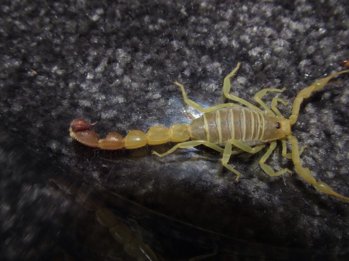
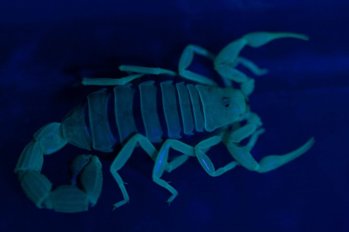


Last edited by a moderator:
I can't post any pics of beautiful Ts and this thread (as well as the tarantula forum) makes me feel just a little bitter about itfigured I can at least share a few pics of my research pets. Not spiders but here is Parabuthus laevifrons. The second pic is it under black light. This little girl has been with me for about 2 years now, originally from Port Nolloth in the northern cape.
View attachment 14516View attachment 14517
Just by looking at them they don't seem deadly poisonous (lacking short fat tails with small "lazers" and small "vice grips"), can't remember all the field training about them - will you be so kind and do a little educational essay here if you please? - I'm a fool for such knowledge?
Red romans do the same! I remember that from living in the freestate
Yip, that's them.Red romans do the same! I remember that from living in the freestate
We were chilling in the lounge one afternoon when I spotted one crossing the room coming straight for my couch, I was told by @Bumblebabe that I crossed the room from my chair to another on the opposite side of the room while in full on nap mode without touching any furniture, and I'm not built for gymnastics.
@johan they are smaller members of the genus Parabuthus, which are commonly known as thick-tailed burrowing scorpions. The entire genus is composed of 20 or so species which are all medically significant. I havent been tagged by these ones in particular but there is a real beautiful black species from the transvaal and lowveld of Zimbabwe which I got tagged by when I was a youngster, its the equivalent of hammering a nail into yourself and is accompanied by heart palpitations, nausea, sweating, disorientation a bit like vertigo. It was special, very special.
In terms of interesting biology, they are nocturnal except one species which is noted as diurnal to crepuscular. All of the parabuthus are arid zone specialists with the exception of the transvaal and mozambique thick tails they have adapted to a more moist environment. It is the arid zone specialisation that we have to thank for the relatively low frequency of envenomation cases from these scorpions. Whilst described as burrowing it is probably better to say they are oppurtunistic burrowers. So if they can steal or borrow a burrow, or a rock to hide under they are just as likely to do that than burrow on their own.
Probably the most fascinating thing for me is the distribution of the species in the genus. The majority of the species (there are a few specialists in Namibia) are co-distributed, so they share habitats and it would seem to be that they speciated from a common ancestor relatively recently in terms of scorpion evolution, answering the how, why and when has captured my interest greatly. Beyond that I am also interested in venomics in the group, current research points towards a very advanced venom system incorporating up to three types of venom depending on intended use for example significant differences between venom injected for prey capture, or venom used in defence. Then further with the same tact of venoms is the question of regional variation in venom content.
Its a bit of a personal thing for me since I was a kid I have been obsessed with snakes, spiders, scorpions. As an adult I have found it alarming to realise that they are massive components of our biodiversity that are sadly being neglected in the sciences in our country. Every graduate seems to want to become a marine biologist! So I have decided to take a hard path and work in a field where eventually the only supervisor I will be able to work with is based at the new york museum of natural history but someone has to do it!
Side note: the thin claws thick tail = venomous is a great general rule but not always true. The deadliest scorpion on earth is the israeli death stalker, thin tail, thin claws. Best rule, dont get stung, if you do sting it back and take it with you to the clinic. There are no real scorpion antivenoms I dont think but A researcher like me would love to come prod you with a stick, identify the beastie and interrogate you as to how much it hurts
In terms of interesting biology, they are nocturnal except one species which is noted as diurnal to crepuscular. All of the parabuthus are arid zone specialists with the exception of the transvaal and mozambique thick tails they have adapted to a more moist environment. It is the arid zone specialisation that we have to thank for the relatively low frequency of envenomation cases from these scorpions. Whilst described as burrowing it is probably better to say they are oppurtunistic burrowers. So if they can steal or borrow a burrow, or a rock to hide under they are just as likely to do that than burrow on their own.
Probably the most fascinating thing for me is the distribution of the species in the genus. The majority of the species (there are a few specialists in Namibia) are co-distributed, so they share habitats and it would seem to be that they speciated from a common ancestor relatively recently in terms of scorpion evolution, answering the how, why and when has captured my interest greatly. Beyond that I am also interested in venomics in the group, current research points towards a very advanced venom system incorporating up to three types of venom depending on intended use for example significant differences between venom injected for prey capture, or venom used in defence. Then further with the same tact of venoms is the question of regional variation in venom content.
Its a bit of a personal thing for me since I was a kid I have been obsessed with snakes, spiders, scorpions. As an adult I have found it alarming to realise that they are massive components of our biodiversity that are sadly being neglected in the sciences in our country. Every graduate seems to want to become a marine biologist! So I have decided to take a hard path and work in a field where eventually the only supervisor I will be able to work with is based at the new york museum of natural history but someone has to do it!
Side note: the thin claws thick tail = venomous is a great general rule but not always true. The deadliest scorpion on earth is the israeli death stalker, thin tail, thin claws. Best rule, dont get stung, if you do sting it back and take it with you to the clinic. There are no real scorpion antivenoms I dont think but A researcher like me would love to come prod you with a stick, identify the beastie and interrogate you as to how much it hurts
Similar threads
- Replies
- 0
- Views
- 285
- Replies
- 9
- Views
- 2K



